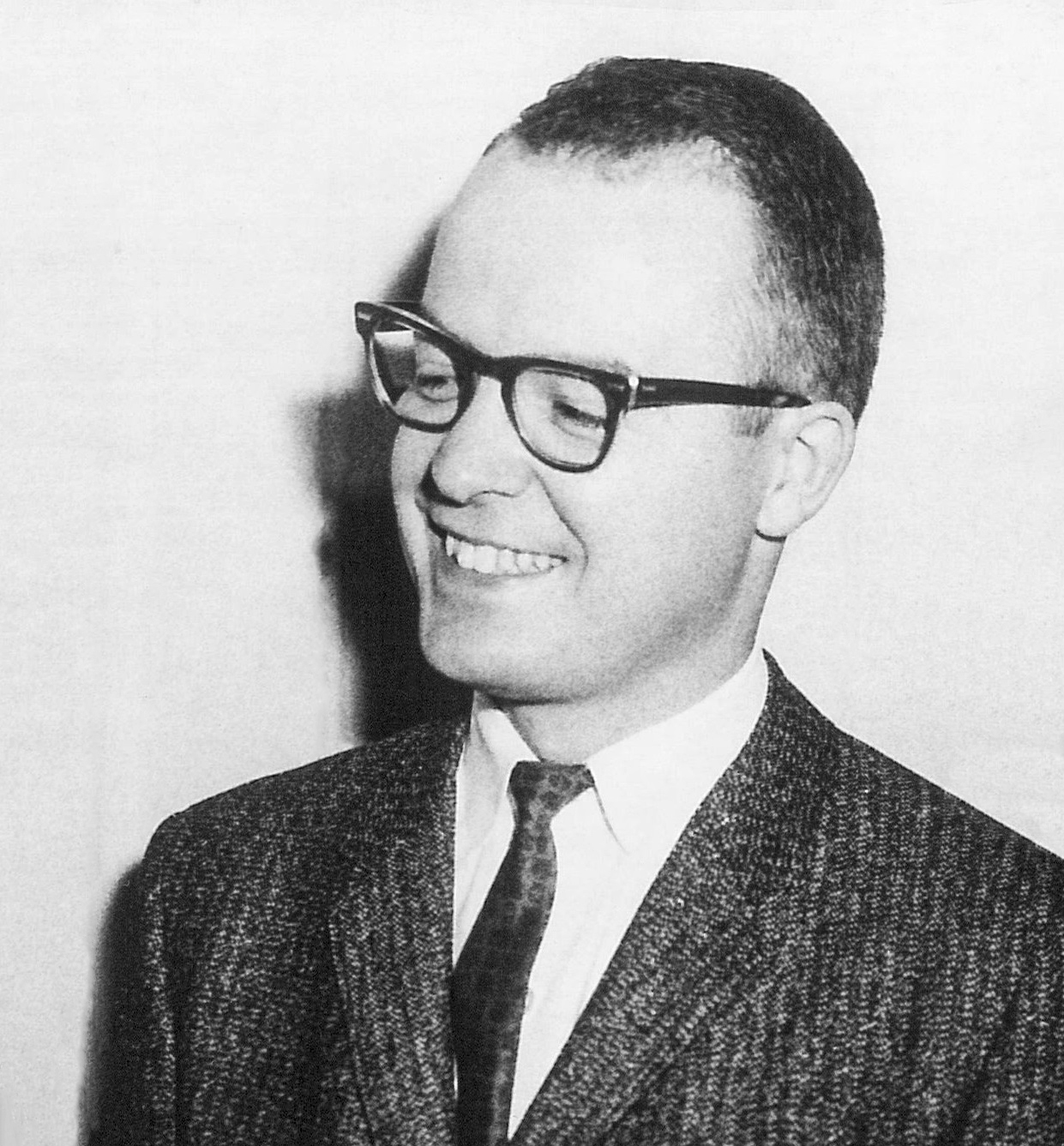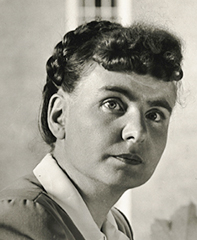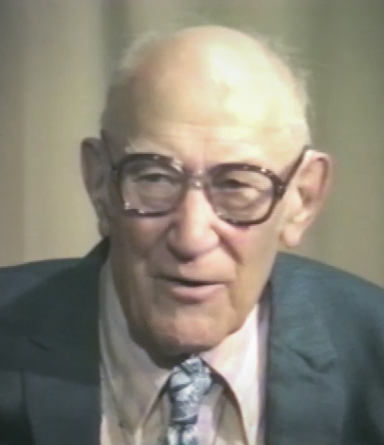- Erin Anheier
A member of the the Boards of both the Cobblestone and Landmark Societies, acted as liaison between the two organizations and transported the photographic collections for scanning. Provided support for the numerous issues and questions that the Cobblestone Info Base creator and editor, Greg Lawrence, encountered during the programming and maintenance of the Info Base.
- Karen Crandall
Avid cobblestone researcher and co-editor as of July 2021 of the Cobblestone Info Base.
I am a retired Systems Design Engineer. My 40-year career was spent in a highly technical field which didn't really accommodate much undisciplined right brain thinking. For that, one had to reach for outside activities. My undisciplined right brain activities got channeled into an interest in cobblestone structures that developed slowly in those early years. Initially it was just a quick double-take at that unusual building with all the tiny stones-interesting. It wasn't long before I started noticing more and more of them. That morphed into carrying a camera around with me and a notepad to keep track of addresses, or at least relative locations. Then in the early 1990s I discovered Carl Schmidt's "Cobblestone Masonry" © 1966, and later Robert Rodabush's cobblestone inventory of the mid-late 1970s. That motivated me to do some independent research of my own. There are hundreds of these cobblestone structures still standing. But I was also discovering that dozens more had disappeared over the years, vanishing into obscurity. Consequently I have narrowed my focus on tracking down whatever scant information I can find about these long-gone cobblestones in the hopes of discovering and documenting them before they are forever lost, gathering as best I can the who's, what's, where's, why's, and when's of their existence.
- Doug Farley
Director of the Cobblestone Society and Museum, sanctioned this project as part of the Society's Resource Center's educational outreach and accepted the responsibility to maintain the Cobblestone Info Base going forward and make it available to the public on the Museum's website.
- Robert W. Frasch
 Educator, historian, museologist, preservationist, was Director of the School of Science and Man at the Rochester Museum and Science Center and was the first president of the Cobblestone Society, 1960-1966, and later trustee. He was a member and chairman of the Rochester Preservation Board and past president of the Genesee Country Historical Federation. (b. 1934 d. 7/30/1990)
Educator, historian, museologist, preservationist, was Director of the School of Science and Man at the Rochester Museum and Science Center and was the first president of the Cobblestone Society, 1960-1966, and later trustee. He was a member and chairman of the Rochester Preservation Board and past president of the Genesee Country Historical Federation. (b. 1934 d. 7/30/1990)- David Hanna, Ph.D.
 Professor Hanna is a specialist in heritage studies, vernacular architecture and transportation history at the University of Quebec at Montreal.
Professor Hanna is a specialist in heritage studies, vernacular architecture and transportation history at the University of Quebec at Montreal.- Miss Helen M. Hastings
An Historical Survey Foreward, Some Old Houses of Western Monroe County 1935 - 1938, by members of Monroe Chapter, Daughters of the American Revolution, compiled by Miss Helen M. Hastings.
Miss Hastings (1871-1953) was a keen amateur historian, and a great niece of William Seymour, a key participant in the reaper industry, manufacturing the horse drawn farm implements in Brockport. NY, ca. 1840s-1880s. She wrote a number of articles about the history of the Brockport, NY area, and was a talented artist and illustrator ca. 1987-1904 whose large portfolio of art work was unknown until discovered in January of 2016 by the Emily L. Knapp Museum and Library of Local History.
Miss Helen M.Hastings, Brockport, N.Y. June 7,1953
Brockport is again called to mourn the loss of one of its loyal citizens. Sunday afternoon, June 7, occurred the death of Miss Helen M.Hastings after a few days illness at the Lakeside Memorial Hospital.
Hers has been an active and helpful life, although quiet, modest and unassuming. After her school days at Rye Girl's School, she continued her studies of Art and she traveled extensively until a few years ago. One of her oil paintings hangs hangs in Seymour Library. She was a member of N. Y. State Historical Assn. and Daughters of the American Revolution.
Among her many historical articles are: Early Clarkson Days, Early Village Schools, Conservation, Tempest and Sunshine, Etc. Our village is indebted to her for preserving pictures, articles, etc. as well as her carefully written and pictorial record of century homes. Miss Hastings was always called upon for authentic information.
As a lady of influence for the finer things in life, it is impossible to estimate her value to our town and village. She was indefatigable in founding and sustaining the free Museum located above the Seymour Library. (Emily L. Knapp Museum and Library of Local History)
In Memoriam "Peace be with Thee-
In the Spirit Land-
Vainly look we for another-
In thy place to standSigned Helen W. Dobson, Historian of Town of Sweden and Village of Brockport N. Y.
Historical archive content courtesy Emily L. Knapp Museum and Library of Local History.
- Cynthia Howk
Architectural Resource Coordinator of the Landmark Society of Western New York (now Emeritus), made the initial phase of the Cobblestone Info Base possible by agreeing to allow the Roudabush and Wolfish photographs and documentation, held by the Society's library, to be scanned and incorporated. During the development of the Cobblestone Info Base, she was the resource to address any architectural concerns and issues.
- Gregory Lawrence

In retirement, what does one do with a lifetime of accumulated knowledge, skills and experiences? What focused purpose evolves from an enthusiasm with photography since age 13, a four year stint as photojournalist at a midwestern college, and a 31+ year technical career at Eastman Kodak in micrographics (microfilm) and high volume, commercial document scanners?
From about 1967 to 1974 there were opportunities to photograph events, documents, artworks and historical objects during the first years of the National Winston Churchill Museum, senior art portfolios for college students, and the Missouri Craftsmen Exhibition. That interest was rekindled in 2011 with two personal, 6 month projects that began to bring together the wherewithal that is now a custom studio providing services of high resolution, digital imagery for artisans, collectors, museums and historical societies.
My retirement is secure, there is no desire for a business, and it became evident in the beginning that clients would not afford what would be billed for the time, effort and costs involved in this photography. The solution was to do photography pro bono for qualifying non-profit organizations and individuals that could not afford professional photography in order to benefit our local communities.
My compensation is the priceless education received from doing the wide range of work that comes to my studio, and the satisfaction that the results of my work are available to the local communities. My mantra is "to become excellent and proficient at what you do, it has to be done 10,000 times". In addition, there is the occasional impetus to upgrade my studio capabilities, either through research and study, equipment purchase, or to design, build, or modify, custom apparatus in my shop for my studio projects.
Erin Anheier, Cobblestone Museum representative, approached me in the Spring of 2018 with a proposal to digitally duplicate the "Robert Roudabush Survey of Cobblestone Buildings in New York State" archived at the Landmark Society of Western New York. There was no hesitation on my part to accept the challenge. My main concern however, beyond the internal use of this survey, was how the contents of the survey could be publicly accessed through the Cobblestone Museum.
To resolve that concern, having done many years of html programming at Kodak, my suggestion was accepted to expand the project to author an info base of the survey that would link to the Cobblestone Museum's website. The information and approximately 3500 photographs in the survey were a near perfect fit for such a project. More important, the info base to which you now have access provides a platform to maintain, update, and import information as desired to have a growing, living library of information, a repository of all known and found about cobblestone structures that can be accessed worldwide.
The official release V1.0 of the Cobblestone Info Base was uploaded for internet testing in December 2019. Now that the public release is available, all known existing and no longer existing structures circa 1825-1868+ in North America are documented in the Cobblestone Info Base with photographs and illustrations. Richard Palmer's very generous contribution of allowing the entire contents of his extensive online blog, "Cobblestone Buildings of North America" to be imported, and work to digitize and import Carl F. Schmidt's books, "Cobblestone Architecture" 1944 and "Cobblestone Masonry" 1966, is complete (permission granted by the Milne Library at SUNY Geneseo). A project to scan and import the Martin and Sheila Wolfish collection of about 2250 cobblestone structure photographs is completed.
Beginning in 2021 and completed as of December 2022, the cobblestone structure archives of the Cobblestone Museum have been digitized and imported into the Cobblestone Info Base. In addition, the circa 1950-1972 large collection of large format negatives, and a variety of smaller negative formats, taken of cobblestone structures by photographer and cobblestone researcher, Gerda Peterich, along with a variety of her photographic prints, have been digitized, reproduced in my studio, and imported into the Cobblestone Info Base. Reviewing and importing digitized information from her research notes and papers was completed in 2023. All planned phases of the work on the Cobblestone Info Base were completed by July 2023. Efforts to revisit set aside documentation and imagery, import of newly obtained documentation, website maintenance with corrections/updates are ongoing. As of November 2024, about 1150 structures with about 7700 photographs and illustrations are included in the Cobblestone Info Base.
Thanks to the Cobblestone Museum and Landmark Society of Western New York for the opportunity to do this project.
"Volunteer honored for creating digital database of cobblestone sites in NY and beyond", by Tom Rivers, Editor OrleansHub.com., 12/1/2020.
Special Citation Award The Landmark Society of Western New York, 12/6/2020.
- Luke Nicosia
Luke is a graduate of Allendale Columbia School, Rochester, NY, and an archaeology major at Dickinson College, Carlisle, PA. In 2018 Luke digitized and organized the entirety of Roudabush's cobblestone study images stored on Kodachrome slides at the Landmark Society of Western New York, while also doing initial research in updating the status and location of the buildings therein.
- Richard Palmer
I first became interested in this topic several years ago after acquiring a copy Cobblestone Quest by Rich and Sue Freeman. Over a period of time I followed some of the routes outlined in the book, stopping here and there and and talking to owners who gave me permission to take pictures of their cobblestone houses. I found most people were pleased someone showed an interest.
The last thorough survey of cobblestone buildings in New York State was compiled by the late Robert Roudabush of Rochester, N.Y. but this was never published. Using this, maps and other materials archived at various locations, I decided to do my own survey which took nearly four years and the taking of more than 600 digital images. This also included a visit to Paris, Ontario to ensure Canada was also represented.
I contacted people in the Midwest who willingly took pictures of cobblestone buildings in Michigan, Ohio, Wisconsin as well as Vermont. Cobblestone houses were also located as far away as Colorado and New Mexico. What started as a casual Sunday drive around the countryside following the Freemans' guidebook turned into a major project covering thousands of miles through both metropolitan and extremely rural areas of upstate New York. Also very helpful was Karen Crandall of the Rochester area whose special interest is extinct cobblestone buildings.
Although I believe I have taken pictures of nearly all known existing cobblestone buildings there may be some I have missed. Also, this is an on-going project of "filling in the blanks" with detailed historical information about each structure.
Editor's Note: Richard Palmer has devoted a great deal of sincere time and effort to compile the blog "Cobblestone Buildings of North America", emphasizing the history of the people and times connected with cobblestone buildings. Through his generosity, he has given the Cobblestone Museum the permission to incorporate the contents of his blog into this cobblestone info base documentation, with his photographs and writing acknowledged throughout.
- Gerda Peterich

The Cobblestone Museum has in its archives an extensive collection of photographic negatives, prints, contact sheet images, documentation and correspondence of Cobblestone architecture by professional photographer, Gerda Peterich (1906-1974). View Gerda Peterich's biography, courtesy of the Syracuse University Libraries, Special Collections Research Center. Her cobblestone photography spans the decades of the 1950s through to 1974.
The collection includes primarily 4 x 5 inch, 5 x 7 inch, a variety of smaller format negatives, contact prints of these various negative sizes, and a variety of photographic prints. All of this photographic media was scanned, post-processed, optimized and retouched pro bono by Gregory Lawrence, Editor Cobblestone Info Base. These digital image files were then imported into the appropriate web pages in the Cobblestone Info Base. The master digital image files are now part of the Cobblestone Museum Peterich collection available for any of the museum needs. The images are downloadable from the Cobblestone Info Base, available to users for their personal use.
Published posthumously in 1976, Gerda's photographs appear throughout the book "Cobblestone Landmarks of New York State", by Olaf William Shelgren, Jr., Cary Lattin, and Robert W. Frasch, Photographs by Gerda Peterich. Html Info Base version. Table of Contents. Book digitized pro bono in the high resolution, digital imagery studio of Gregory Lawrence, by permission of the Cobblestone Museum. Gerda Peterich Letter of Introduction on behalf of the Cobblestone Museum.
Other work published related to cobblestone architecture: "Cobblestone Architecture of Upstate New York", by Gerda Peterich, Journal of the Society of Architectural Historians, Vol 15, Issue 2 1956, Pages 12-18. By permission of the University of California Press, "The requested material is in the public domain and you are welcome to use it." Original manuscript portions of which were presented by Gerda Peterich to the Central New York Chapter of the Society of Architectural Historians at the meeting held on October 15, 1955, at the University of Rochester.
Charter Member of the Cobblestone Society, Childs, N. Y.
- Robert Roudabush (1910-1988)
In March, 1976, while doing some nature photography in Mendon Ponds Park, I came across the cobblestone house in the center of the park. After examining the stones and mortar carefully, I realized that after forty years in New York State, I did not know anything about cobblestones, and resolved to do some study on the subject.
The project began with the determination to photograph for study all of the cobblestone buildings in Monroe County. The basic plan was to examine the stones and mortar with the idea of attempting to see if a mason's style was distinctive enough to identify in various buildings. Later, this expanded to the present total of 660 buildings in 21 counties. Excerpt from Roudabush Survey 1976-1980, page 1, courtesy The Landmark Society of Western New York.
His hobby: Cobblestone buildings By Doris Wolf, Geneva Times, June 9 1979
- Carl F. Schmidt (1894-1988)

For many years the cobblestone houses of this area have aroused my interest, but it was only a few years ago that I seriously began studying and recording them in a systematic manner. This work was carried out mainly from an architectural point of view and pertains generally to the methods of building with these small stones and the various types of cobblestone masonry. Every effort was made to recover the names of the original owner of the house and the mason who did the work.
The history of the families who lived in the houses and the events which occurred in them I will leave to the local historical societies, who can do this work much better than I can.
When I planned this research I believed there would be possibly fifty or seventy-five examples to investigate, but every visit to a cobblestone house would lead to information of another house to be found on some less traveled road or country lane; so that I now have visited more than two hundred and fifty examples and my list of future prospective sites keeps growing.
Excerpt from the "Forward" written by Carl F Schmidt for his book "Cobblestone Architecture" 1944.
For two decades Carl F. Schmidt, architect and artist of Rochester, N. Y. has spent the spare moments of a busy professional life tracking down and recording the beginnings of architectural development in the United States. He was first interested in Colonial and Post-Colonial buildings and during several summer vacations drove up and down the Atlantic Coast, with many sketching trips into New England, Virginia and the Carolinas.
For the study of the Greek Revival influence in Post-Colonial architecture Mr. Schmidt found abundant material in his native city of Rochester and in towns of Western New York which could be reached on week-end trips. The harvest of these years is a collection of folios of measured drawings, files of data, and a series of pencil drawings of notable examples of each mode. Copies of many of these drawings and documents are in libraries and museums in Washington and Rochester.
In the course of his journeyings Mr. Schmidt noted the Cobblestone Houses of the Rochester and Monroe County country, described in this volume. Further study led him to the conclusions here set down as to the extent, and the limitations, of what may be called the Cobblestone House Area. He examined not only the houses, themselves, but, wherever possible, delved into their history and was rewarded by learning many facts from old family records, and, in some instances, from persons whose memories carried back to the years when the cobblestone houses were being built. In collecting records of these structures he has supplemented his drawing pencil with the camera and has built up a collection of black and white, and color photographs of buildings and of their detail. Each medium has its advantages, the monochrome photography bringing out structural detail, while the Kodachrome prints reveal the wide variety of color and tone in the surface of the buildings.
Excerpt from the "Introduction" written by Claude Brandon for Carl F. Schmidt's book "Cobblestone Architecture" 1944.
Portrait captured from video http://hdl.handle.net/1802/28393, URMC Oral Histories 5/24/1982, The University of RochesterCarl Schmidt published a comprehensive treatise "Cobblestone Masonry" in 1966 from which Robert Roudabush refers to or quotes in the document "Cobblestone Buildings in New York State A Survey by Robert L. Roudabush, 1976-1980".
- Karen Crandall
Martin Wolfish was a prominent physician in Toronto, Canada specializing in Adolescent medicine. He was the first Chairman of the Adolescent Medicine Committee of the Adolescent Medicine Committee and enjoyed a long and productive career. He and his wife, Sheila, developed an interest in cobblestone buildings and combined that with their love of travel. This led to Martin photographing all the cobblestone buildings they could locate in the 1990's.One of their contacts was to Cynthia Howk of the Landmark Society of Western New York which maintains an architectural library. Recognizing the value of their photos to future researchers, they generously told Cynthia that they would donate their photographs to the Landmark Society in their wills. But, they further surprised her by personally delivering them. The Landmark Society recognized their contribution to the documentation of cobblestone structures by awarding them the Special Achievement Award in 1999. The Wolfish photos are included this Cobblestone Info Base with permission from the Landmark Society.
Martin Wolfish letter 26FEB1992
Martin Wolfish letter 12DEC1999
Cynthia Howk reply to Martin and Shiela Wolfish 22DEC1999
Robert Englert NYS Historic Preservation letter 22DEC1999
Wolfish corrections and updates to Roudabush Survey
Contributors
A special thanks to the following contributors who have supported this info base in a number of ways by provided input to enrich, amend, and/or otherwise improve the content for your use.
Christopher Brandt, Architect, Bero Architecture PLLC, Rochester NY
Dennis Hogan, Town of Gorham Historian: Per the Cobblestone Museum inquiry, determined the location of the GOR-6 Smokehouse, and provided new photographs and historical information.
Glenn Hinchey, contributed photographs of cobblestone structures for Richard Palmer's blog. The Preservation Association of Central New York in 2015 presented a Preservation Merit Award to Glenn Hinchey for significant commitment and contributions to preserving important architectural resources in the historic Hawley-Green neighborhood of Syracuse, NY.
Clyde Maffin became Ontario County Historian in 1968 and retired from the position in 1981, providing the Cobblestone Museum with a number of photographs of cobblestone structures in Ontario County. He had been director/curator of the Ontario County Historical Society museum since 1965, but left that position in 1973. That organization is a not-for-profit organization. As County Historian, Clyde worked for the government of Ontario County. I believe his service was always less than full-time. Biographical information provide by Preston E. Pierce, MLS, EdD, Ontario County Historian, email 8/27/2021.
Ward O'Hara, Author of "Cayugas Cobblestones" 1991.
Holly Watson, Deputy Livingston County Historian